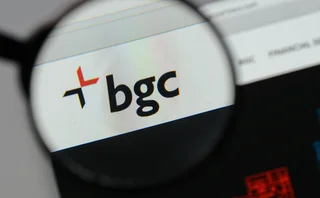
The $350 trillion problem: Too big to solve?

Financial markets are sitting on a time bomb. In just over three years’ time, the rate that underpins $350 trillion of financial contracts could disappear. Whether by choice or by regulatory force, transition away from discredited Libor rates is something market participants can no longer ignore.
The UK’s Financial Conduct Authority said in July 2017 that it would not compel panel banks to submit quotes to the range of Libor currencies after 2021. On the one hand, that offers some reputational respite to banks that submit daily quotes to a tainted benchmark, and whose widespread manipulation has cost them a collective $9 billion in fines. On the other, Libor underpins everything from over-the-counter interest rate swaps to personal loans and mortgages. It is the rate that financial markets revolve around and are modelled on. It is so deeply entrenched in the financial system that Libor could simply be too big to fail.
Libor’s owner, ICE Benchmark Administration, is scrambling to restore the rate’s credibility by correcting perceived flaws in the calculation methodology. But there is no magic cure. In many currencies and tenors, transactions that underpin Libor simply don’t exist.
For example, in one Libor currency/tenor combination for which a rate is produced each business day, the dozen panel banks submitting rate information executed just 15 transactions between them for an entire year.
The post-crisis shift away from unsecured bank funding means Libor has become a measure of ‘expert judgement’ – in many cases it is little more than guesswork. And that doesn’t sit easily alongside new benchmark regulation introduced by the European Union at the start of this year.
Regulators have upped the rhetoric in recent months, urging a market-led transition before they are forced to take action in case the benchmark ceases to exist. Regulators could also rule Libor non-compliant with the new rules, meaning it could not be used for new trades.
Trade groups including the International Swaps and Derivatives Association, the Securities Industry and Financial Markets Association and the Loan Market Association are leading efforts to create fallback language that would smooth the transition for legacy contracts to alternative risk-free rates (RFRs) – or at least prevent a catastrophe – in the event that Libor is discontinued.
In the US, that alternative is the secured overnight financing rate (SOFR), a Federal Reserve-backed benchmark underpinned by $700 billion in overnight repurchase agreement transactions each day – more than 1,000 times the volume backing three-month dollar Libor.
In the UK, the Bank of England-led working group on sterling RFRs has selected a reformed version of Sonia – a rate underpinned by almost £40 billion of daily transaction volume.
Eurozone efforts trail a long way behind. In September, the European Central Bank confirmed the euro short-term rate (Ester) as a replacement for Eonia – an overnight funding rate used for euro swaps discounting, which, thanks to the benchmark regulation, will be barred for use in new contracts from 2020. Publication of the new rate will not begin until as late as October 2019, leaving just three months to build a functioning curve. As for Euribor, the success of its reform efforts won’t be known until later this year.
New products to aid transition are gaining traction in some markets. Listed futures linked to SOFR and Sonia are off to a flying start – at least compared with the notoriously low success rate for most futures launches. In swaps markets, the transition is being supported by new clearing services. London’s LCH SwapClear has expanded its Sonia swaps clearing to longer-dated tenors, while Chicago-based CME is preparing to add SOFR swaps clearing before year-end.
But while regulators are calling on banks to transition to RFRs, they are also introducing higher capital charges for illiquid trades as part of the forthcoming Fundamental Review of the Trading Book (FRTB). That means it would be costly for banks to transition to alternative RFRs before sufficient liquidity emerges.
The scale of the issue has hardly been played down. At $350 trillion, the world’s most important number is more than four times gross world product. But that may just be the tip of the iceberg when it comes to solving the problem.
Read more articles from the 2018 Beyond Libor special report
Only users who have a paid subscription or are part of a corporate subscription are able to print or copy content.
To access these options, along with all other subscription benefits, please contact info@risk.net or view our subscription options here: http://subscriptions.risk.net/subscribe
You are currently unable to print this content. Please contact info@risk.net to find out more.
You are currently unable to copy this content. Please contact info@risk.net to find out more.
Copyright Infopro Digital Limited. All rights reserved.
You may share this content using our article tools. Printing this content is for the sole use of the Authorised User (named subscriber), as outlined in our terms and conditions - https://www.infopro-insight.com/terms-conditions/insight-subscriptions/
If you would like to purchase additional rights please email info@risk.net
Copyright Infopro Digital Limited. All rights reserved.
You may share this content using our article tools. Copying this content is for the sole use of the Authorised User (named subscriber), as outlined in our terms and conditions - https://www.infopro-insight.com/terms-conditions/insight-subscriptions/
If you would like to purchase additional rights please email info@risk.net
More on Markets
Canada’s triparty repo launch aims to fill C$60bn void
Test trades on TMX/Clearstream platform represent “quantum leap” for creaking funding markets
SG trader dismissals shine spotlight on intraday limit controls
Risk experts say many banks rely on daily reports and can’t effectively monitor intraday limits in real time
Hedge funds’ pricing often trumps other buy-siders – SNB
Research shows “advantageous” prices result in outperformance of 139bp trading USD/CHF
Softer FX rules for China QFIs set to boost CNY competition
Freedom to circumvent local custodians a plus for pricing and best execution – State Street
Allianz Life drops single-name CDS positions in Q4
Counterparty Radar: US life insurance industry volumes sink to lowest level in two years
Sustainable bond markets miss an options trick
A derivatives mindset could boost lagging sustainability-linked market, argues climate think-tank
FX dealers face end-of-day trading stress from T+1 shift
Experts say switch to using overnight swaps could be “problematic” and lead to wider spreads
Consortium backs BGC’s effort to challenge CME
Banks and market-makers – including BofA, Citi, Goldman, Jump and Tower – will have a 26% stake in FMX
Most read
- Podcast: Olivier Daviaud on P&L attribution for options
- For a growing number of banks, synthetics are the real deal
- SG trader dismissals shine spotlight on intraday limit controls








